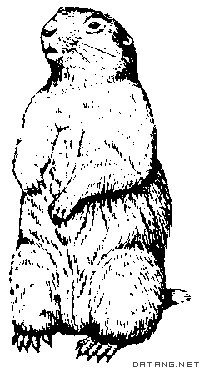1) Marmota himalayana plague


旱獭鼠疫
1.
Objective To confirm whether there are marmota Himalayana plague focus of natural infection in Sichuan Province and so as to provide basis for plague pervention and control.
结论确定四川德格县为喜马拉雅旱獭鼠疫自然疫源地。
3) Chinese marmot


中国旱獭
1.
Cloning and sequencing of interferon alpha family gene of Chinese marmot;


中国旱獭α干扰素家族基因的克隆及序列分析
2.
coli,and purify rWHcAg under native condition by precipitation with saturated ammonium sulfate and CsCl gradient centrifugation;Immunize Balb/c mice with purified rWHcAg to prepare antiserum;Establish a competitive inhibition ELISA method to detect WHcAb in serum of Chinese marmots.
目的建立检测土拨鼠肝炎病毒(WHV)核心抗体的ELISA方法,应用于WHV感染的中国旱獭动物模型的研究。
4) Marmota


旱獭属
5) Marmota baibacina


灰旱獭
1.
Niche Study on Parasitic Fleas on Marmota baibacina and Citellus undulatus;


灰旱獭和长尾黄鼠寄生蚤生态位的研究
2.
Result The animals of ten species were captured in the investigated area, incluing Lepus tolai, Marmota baibacina, Citellus undulatus, Citellus erythrogenys, Sicista tianschanica, Apodemus sylvaticus, Cricetulus migratorius, Microtus arvalis, Alticola argentatus .
结果 调查区内共采集啮齿动物 10种 ,优势动物为灰旱獭 (Marmotabaibacina) ,次为长尾黄鼠 (Citellusundulatus)与灰旱獭在同一生境 ;灰旱獭定点观察密度为 2 。
3.
Objective To evaluate the therapeatic effect of HBcAg based on synthetic peptides in HBV\|infected Marmota baibacina.
目的 研究合成HBcAg多肽干预灰旱獭感染HBV的作用。
补充资料:旱獭
| 旱獭 Marmota;marmots 啮齿目松鼠科旱獭属的通称。最大个体的体长近60厘米,重达7.7 千克以上。具一系列适于掘洞穴居的形态特征:体短身粗,无颈,四肢短粗,尾、耳皆短,头骨粗壮,眶间部宽而低平,眶上突发达,骨脊高起,身体各部肌腱发达有力。体毛短而粗,毛色有地区、季节和年龄变异。全世界约有11种,5种分布在北美洲,6种仅见于欧亚大陆。中国有3种。栖息于平原、山地的各种草原和高山草甸。集群穴居,挖掘能力甚强,洞道深而复杂,多挖在岩石坡和沟谷灌丛下。从洞中推出的大量沙石堆在洞口附近,形成旱獭丘。白天活动,草食,食量大。取食时,有较老个体坐立在旱獭丘上观望,遇危险即发出尖叫声报警同类闻声迅速逃回洞中,长时间不再出洞。秋季体内积存大量脂肪,秋后闭洞处蛰眠状态,次年春季3~4月份出洞活动。出蛰后不久即交配繁殖,每年只生1胎,4~6仔。旱獭每日啃食大量优良牧草,与牛羊争夺天然牧场。同时又是鼠疫的主要宿主。
|
说明:补充资料仅用于学习参考,请勿用于其它任何用途。
参考词条
